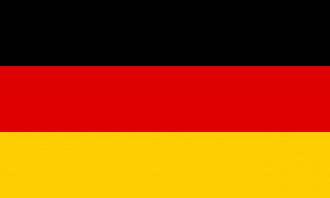Germany, the largest national economy in Europe, has performed well throughout the last decade and has demonstrated resilience in the face of global economic uncertainty. This was nevertheless felt in 2009, when Gross Domestic Product (GDP) contracted by -5.6%, but recovered in 2010 and 2011, recording increases of 4.1% and 3.7% respectively. From 2012 to 2014, Germany experienced 3 years of weak economic growth (less than 1.5% of the GDP), before economic performance improved again in 2015. At the beginning of 2016, GDP growth had been strong at 0.7%, while during the second quarter, economy continued to grow, but at a slightly slower pace, as GDP increased by 0.4%. According to a report provided by the Organisation for Economic Co-operation and Development (OECD), economic growth in Germany is projected to remain solid, as a robust labour market, while low oil prices are expected to strengthen private consumption, and low interest rates and the housing needs of refugees, will boost residential investment.
Germany is one of the countries with the highest employment rates in the EU. According to provisional results provided by the Federal Statistical Office in the second quarter of 2016, 43.5 million people worked in jobs that are subject to mandatory social insurance contributions. Compared to the second quarter of 2015, the employment rate increased considerably (by some 1.2%), a further proof of the country’s sound economic performance.
With some 775,000 jobs, automotive is one of the most important industries in Germany. The backbone of the industry is made up of six strong brands, namely Volkswagen, BMW, Daimler, and the VW-owned marques Audi and Porsche, as well as Opel (General Motors). In 2014, the German carmakers, produced some 14.9 million cars, exporting approximately 77% of their total production. Apart from the automotive industry, plant and mechanical engineering, as well as the chemical industry and the electrical and electronic engin¬eering industry, are traditionally strong pillars of the German economy.
The most important economic centres in Germany, are the Ruhr Area, Greater Munich and Greater Stuttgart (high-tech, automotive construction), Rhine-Neckar (chemicals, IT), Frankfurt am Main (finance), Cologne (media) and Hamburg (port, aircraft construction), as well as the regions of Dresden, Jena, Leipzig, Leuna, and Berlin-Brandenburg.
German-made chemical, automotive, and machinery products, are in particularly high demand worldwide. Germany’s main trading partners include European countries such as France, the UK and the Netherlands, as well as international markets, such as the United States.
In July 2016, Germany exported goods with a total value of 96.4 billion euros, while the value of imported goods reached 76.9 billion euros, creating a foreign trade surplus, of 19.5 billion euros. Based on provisional data, provided by the Federal Statistical Office (Destatis), exports decreased by 10.0% and imports by 6.5% in July of 2016, compared with data of the same month, in 2015.
In 2015, motor vehicles and parts accounted for 18.9% of total exports, constituting Germany's main export product. Machinery (14.2%) and chemical products (9.0%) followed. Notably, the US was the most important trading partner of Germany, as goods with a total value of 173.2 billion euros were traded between the two countries. France and Netherlands with a foreign trade value of 170.1 and 167.6 billion euros respectively, followed.
|
|
July 2016 |
January to July 2016 |
Percentage change from |
|
|
July2015 |
January to July 2015 |
|||
|
billion euro |
% |
|||
|
Total exports |
96.4 |
699.3 |
–10.0 |
–0.3 |
|
Geographical Distribution |
||||
|
EU Member States |
56.3 |
414.6 |
–7.0 |
1.7 |
|
Euro-zone |
35.5 |
259.0 |
–6.0 |
0.8 |
|
Non-euro-zone |
20.8 |
155.6 |
–8.8 |
3.3 |
|
Third countries |
40.1 |
284.8 |
–13.8 |
–3.2 |
|
|
|
|
|
|
|
Total imports |
76.9 |
549.4 |
–6.5 |
–0.7 |
|
Geographical Distribution |
||||
|
EU Member States |
51.3 |
366.2 |
–4.5 |
1.1 |
|
Euro-zone |
35.4 |
249.9 |
–4.4 |
0.0 |
|
Non-euro-zone |
15.9 |
116.3 |
–4.8 |
3.3 |
|
Third countries |
25.6 |
183.2 |
–10.1 |
–4.2 |
Source: https://www.destatis.de
In July 2016, Germany exported goods with a total value of 56.3 billion euros to the Member States of the EU, while it imported goods valued 51.3 billion euros from European Union Member states. Exports of goods to countries outside the European Union (third countries), amounted to 40.1 billion euros, while imports from such countries, totalled 25.6 billion euros.

